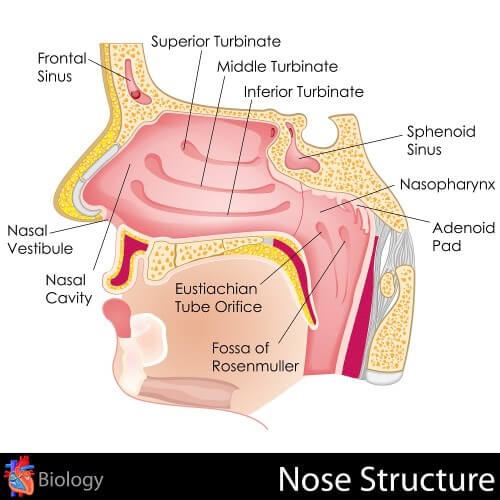What is the connection between the receptors for bitter and sweet tastes, located in the nose, and between respiratory tract infections and diabetes?

Article: Naomi Ziv, young Galileo
In 2010, surprisingly, receptors for bitter substances were discovered in... lungs! These receptors do not convey to the brain a message about the taste like the receptors in the taste buds in the tongue, but they are activated by bitter substances and cause the muscles in the lungs to relax and the air passages to open. Taste receptors have also been discovered in other parts of the respiratory system. Their role was not understood, but recently there has been progress towards solving the mystery - in the nose.
The lining of the nose protects it from pathogenic organisms (causing diseases), toxins and allergens. It contains peptides (short chains of amino acids), which kill bacteria, viruses and fungi. Recently, researchers from the University of Pennsylvania in the United States discovered that receptors for bitter and sweet tastes, located in special cells in the nose, play an important role in controlling the production of these peptides and protecting the nose from infections.
It was discovered that the bitter receptors are the ones that lead to the secretion of the peptides that protect against bacteria, but the activity of the taste receptors in the nose depends on the glucose levels in the mucosa because bacteria feed on sugar. When the sugar levels are high - that is, the bacterial population is small - the sweet receptors, which are activated by sugar (eg glucose), prevent the activity of the bitter receptors and the secretion of the lethal peptides.
When the sugar levels drop below a certain level - meaning the bacteria have consumed most of their food and multiplied too much - the sweet receptors unblock the bitter receptors, and these are activated by bitter compounds. Now the activated bitter receptors send a signal to the nearby cells, and this results in the release of the peptides that protect against bacteria. The concentration of secreted peptides is so high that they are able to kill a wide variety of pathogens, including bacteria resistant to antibiotics.
These discoveries can explain the tendency of some people to suffer from infections and chronic inflammations in the respiratory tract. Among people suffering from chronic sinusitis or hyperglycemia (high glucose level), and also among diabetic patients, high levels of sugar in the nasal mucosa were found. The sweet receptors, which are activated by this sugar, actually block the immune response of the bitter receptors, and the nasal defense is compromised!
Following the new discoveries, a possible solution appears in the form of the use of substances that block the sweet receptors, such as Lactisol, to enable the activation of the bitter receptors even when the sugar levels in the nose are high.
* The article was published in the November 2014 issue of Young Galileo
Want to read more? To receive a young Galileo magazine as a gift
Visit our Facebook page
The author is the owner of the blog "Science on a Plate"
